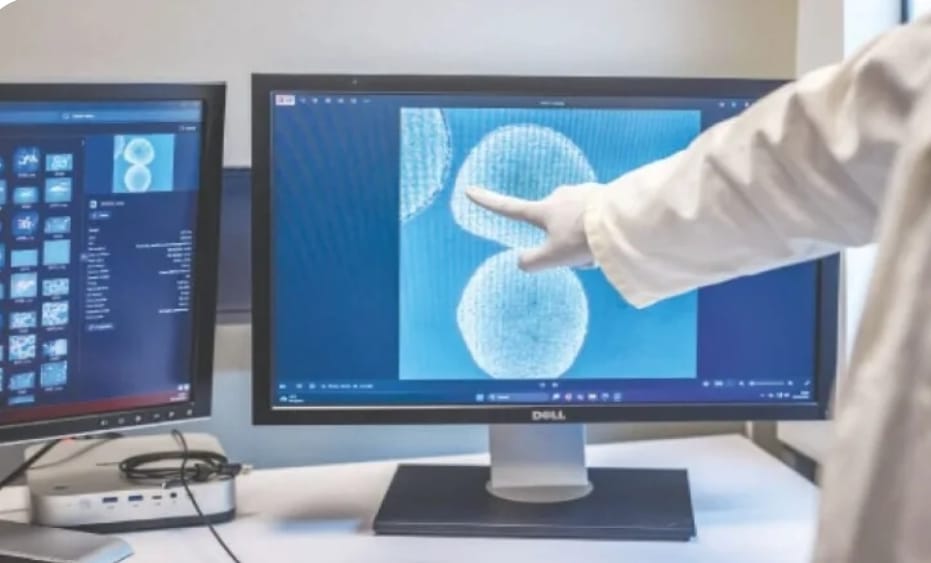
“Can human mini-brains power the next generation of computers? Scientists push the limits of biology and technology with organoid intelligence.”
Can Human Mini-Brains Really PoerComputers?
Introduction: A Revolution in Computing

In an astonishing scientific breakthrough, researchers are now using human mini-brains to power computers. This fusion of biology and artificial intelligence (AI) could redefine how machines think, learn, and process information. Scientists are calling it “organoid intelligence” — a radical leap that goes beyond traditional AI, offering smarter, faster, and energy-efficient computing inspired by the human brain.
But the question remains — can human mini-brains truly replace silicon chips? Let’s dive into this groundbreaking technology that may change computing forever.
What Are Human Mini-Brains?
Human mini-brains, or brain organoids, are tiny 3D clusters of human brain cells grown in laboratories. These mini-brains mimic the real human brain’s structure and can transmit electrical signals, allowing them to learn and process information.
Created using human stem cells, these organoids are not conscious, but they can perform complex neural activities, just like brain neurons. Each mini-brain, though only millimeters in size, contains millions of neurons, making it a powerful biological processor.
This incredible technology allows scientists to explore how living neurons could one day replace silicon circuits in computers.
How Scientists Use Mini-Brains to Power Computers
The process begins by connecting these brain organoids to electronic systems that translate neural signals into computer-readable data. Using a digital interface, scientists allow living neurons to “communicate” with software — creating what some call a bio-computer.
In early experiments, these bio-processors learned to play the classic video game Pong, adapting and reacting faster than AI-driven models. This shows that biological computing can be more flexible and efficient than artificial systems.
Unlike silicon chips, living neurons require minimal energy and can learn from experience, not just data input. This makes brain-powered computing not only faster but also sustainable and self-learning.
Organoid Intelligence: The Next Step Beyond AI
This new field, known as Organoid Intelligence (OI), merges biological science with AI development. While artificial intelligence relies on algorithms and massive data sets, OI systems can think naturally, adapting without being programmed.
Experts believe that organoid computers could eventually surpass even advanced AI models like ChatGPT and Google DeepMind by offering real cognitive flexibility — the ability to reason, remember, and learn dynamically.
In short, organoid intelligence isn’t just an upgrade to AI — it’s the birth of living, thinking technology.
Potential Uses of Brain-Powered Computers
The integration of human brain cells in computing opens up revolutionary possibilities:
- 🧠 Medical Research: Scientists can study diseases such as Alzheimer’s and Parkinson’s using real human brain activity.
- ⚙️ Next-Gen AI: Biological computers could create machines capable of emotional understanding and reasoning.
- 💡 Supercomputing: Living neurons can process complex data faster than traditional chips.
- 🔋 Energy Efficiency: Mini-brains use far less power than silicon-based processors.
These advancements could transform industries from robotics and neuroscience to climate modeling and quantum computing.
Ethical Concerns: Should We Fear Living Machines?
Despite the excitement, this new technology raises serious ethical and moral questions. Could human mini-brains ever develop consciousness? What happens if a bio-computer starts to think or feel?
Experts in bioethics insist that strict global guidelines are needed to ensure these experiments remain safe, humane, and transparent. Currently, brain organoids are not conscious, but as technology evolves, defining the boundaries between man and machine will become critical.
The Future of Computing: Where Mind Meets Machine
Imagine a world where computers think like humans — not just following commands but understanding context, emotion, and logic. Scientists believe that in the coming decades, hybrid systems combining biological and digital intelligence will reshape industries, medicine, and AI development.
This marks the dawn of living computers, where the line between the biological and the artificial disappears. The future of technology might not be metal and code — it could be alive.
Conclusion: The Dawn of a Bio-Tech Era
So, can human mini-brains really power computers?
The answer is yes — and it’s already happening. This remarkable fusion of science, technology, and biology is redefining what intelligence means.
From curing brain diseases to building living supercomputers, organoid intelligence may become the foundation of tomorrow’s computing world. The age of living, learning machines has officially begun.
“



